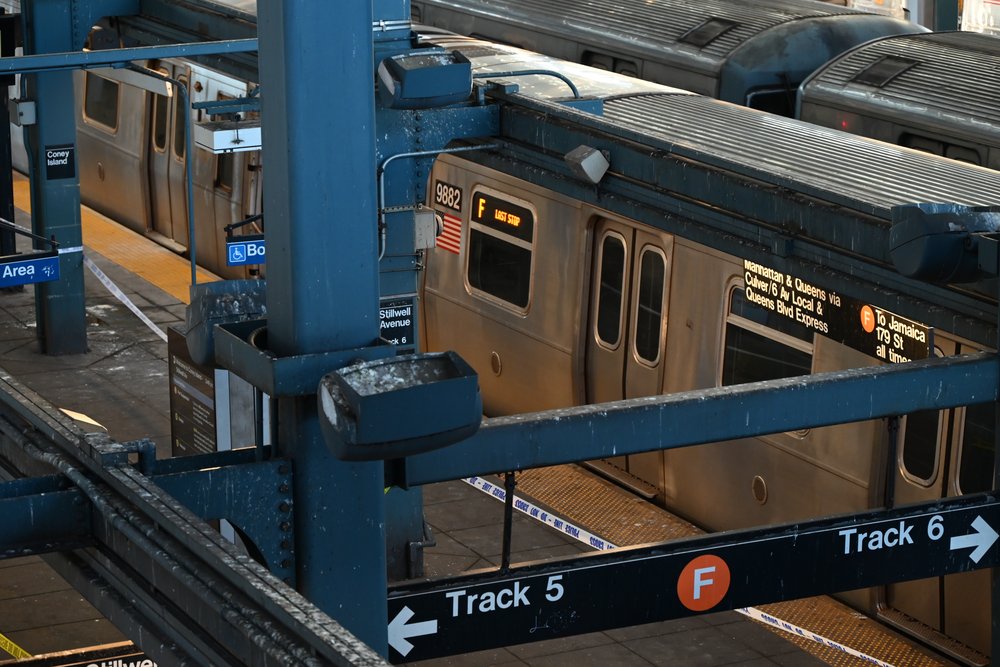What to know about the case of the man accused of lighting a woman on fire on the F train
Dec. 24, 2024, 5:21 p.m.
Sebastian Zapeta, 33, was arrested Sunday after teens recognized him from footage of the incident, which took place on an F train at the Stillwell Avenue station earlier that day, authorities say.

The man accused of lighting a woman’s clothing on fire on a subway car and killing her is being held without bail as prosecutors make their case to a grand jury.
Sebastian Zapeta, 33, was arrested Sunday after teens recognized him from footage police released of the incident, which took place on an F train at the Stillwell Avenue subway station in Brooklyn earlier that day, authorities say. The woman who died has still not been identified.
The attack has renewed anxiety about public safety on the subway and illegal immigration.
Prosecutors say Zapeta is undocumented and had previously been deported from the United States.
Here’s what we know about the case so far.
What have prosecutors established so far about the case?
Zapeta appeared in court on Tuesday, but did not speak during the brief hearing as Judge Jung Park ordered that he be held without bail. The judge addressed him through a Spanish interpreter.
Ari Rottenberg, an assistant district attorney, argued that “not even a significant monetary bail would be significant enough,” drawing no objection from Zapeta’s defense attorney.
Rottenberg said Zapeta approached the victim in the train at around 7:30 a.m. on Sunday, set her clothing on fire and proceeded to fan her with a shirt. As the fire spread through the subway car, Rottenberg said Zapeta exited the train and watched as the woman burned to death.
The city’s medical examiner ruled the death a homicide by smoke inhalation and thermal injuries but has not been able to identify the woman, according to the prosecutor.
Police circulated surveillance images from the incident and arrested Zapeta after three students reported seeing him hours after the attack. The images were captured by cameras that were newly installed on subway cars as part of a recent systemwide public safety initiative.
What are the charges against Zapeta?
Zapeta was charged with first- and second-degree murder, as well as arson.
What else do we know about Zapeta?
Zapeta is originally from Guatemala and entered the United States without authorization, according to immigration authorities, who said he was deported in 2018 and returned to the United States afterward, although it’s not entirely clear when.
After his arrest on Sunday, Zapeta told law enforcement that he “drinks a lot of liquor,” according to a prosecutor who spoke in court. A defense attorney declined to comment after his arraignment.
A spokesperson for Mayor Eric Adams said Zapeta was in and out of city-run shelters in recent years and had entered the city prior to the migrant influx that began in 2022.
Police said he was living in East New York at an address on Forbell Avenue, which appears to be associated with a substance abuse treatment facility.
What have federal immigration authorities said about Zapeta?
Officials with Immigration and Customs Enforcement said the agency intended to lodge an immigration detainer with the NYPD. A detainer, according to ICE, allows for the transfer of an immigrant in a formal setting rather than “at-large within the community.” The NYPD has not responded to questions about whether it would hand Zapeta over to ICE. However, immigration experts said it would not happen prior to a conviction.
And it’s unclear whether Zapeta would serve out a sentence in the United States if he is convicted.
Given Zapeta’s immigration status, what direction could this case take?
“His immigration status has no bearing on how the criminal system is going to play out,” said Camille Mackler, founder and executive director of Immigrant ARC, a legal advocacy group serving immigrants.
Mackler said whether he takes a plea deal or the case goes to trial, it would play out regardless of whether Zapeta is in the country legally or not.
She added that “an arrest in and of itself wouldn't be enough to sustain a charge of deportation.
But certainly, if he's convicted of a crime that has immigration consequences, then this could cause him to be deported in the long run.”
Suspect in subway fire death was deported 6 years ago, only to find his way to NYC A weekend of violence on NYC's subways stokes fears about public safety